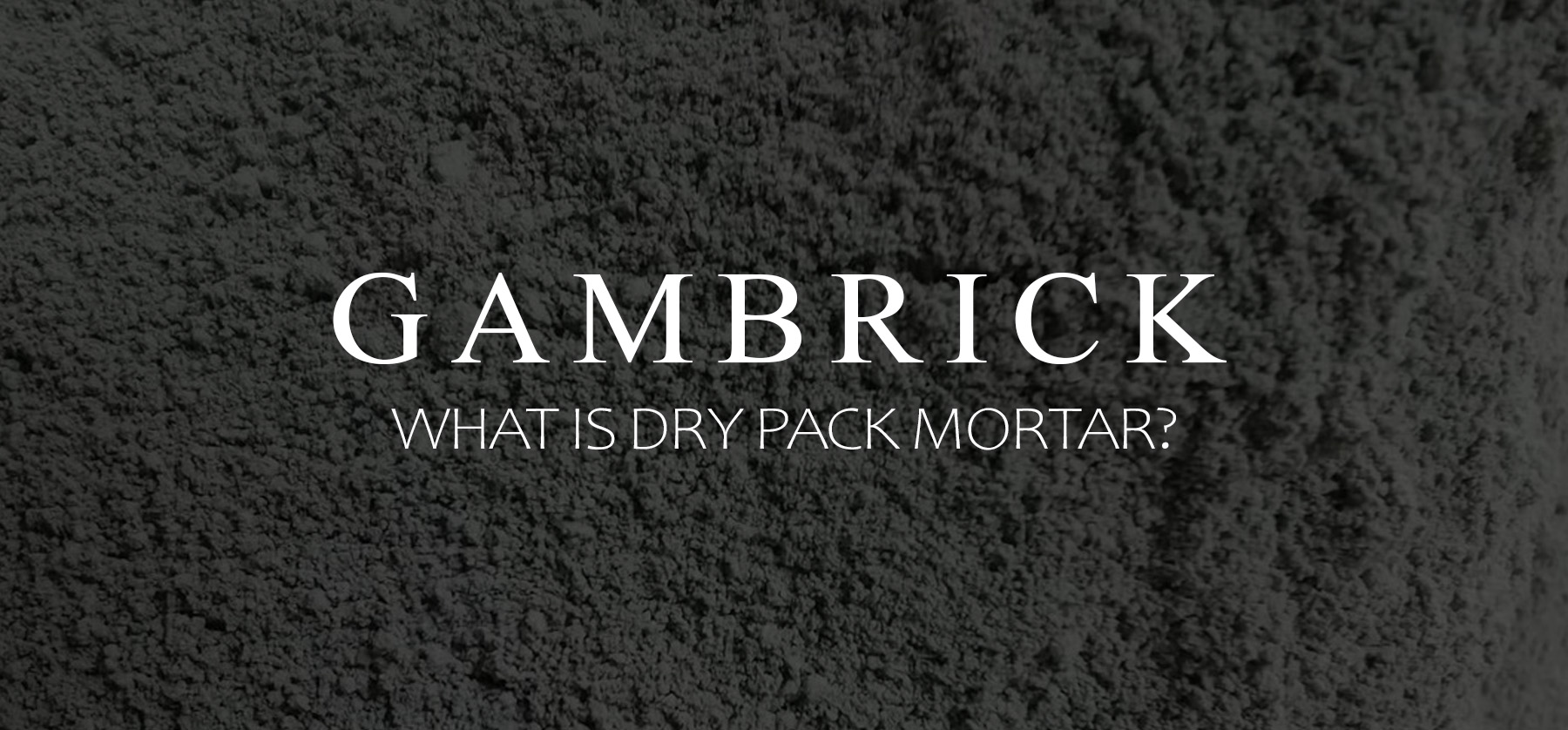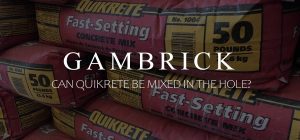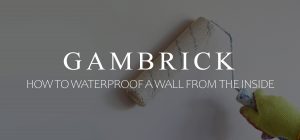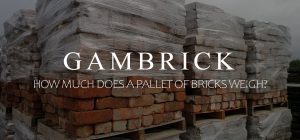What Is Dry Pack Mortar?
Dry pack mortar is a strong sand & cement mortar mix that’s typically used for masonry repair work. You make it by combining Portland cement and sand mixed with just enough water to hydrate the cement. It’s also called deck mud or floor mud. Generally we use dry mix to repair cracks that are deeper than they are wide. It’s great as a filler material you can pack down into a crack because it’s so dense. But it’s not as good at repairing wide cracks.
The ratio I use to make dry pack mortar is one part cement, 2 1/2 parts sand, and just enough water to mix the cement. The consistency should be like thick oatmeal or moldable play sand. Take some wet mortar in your hand and form it into a ball. The ball shouldn’t crumble or slump when placed on a hard surface. If the mix is powdery or too wet to hold, you’ve used too little or too much water. Adjust the water level slowly as needed.
Getting the water level just right is a very important part of mixing strong dry pack mortar.
Dry Pack dries very strong and packs tightly so it’s great for repairing small deep cracks. But don’t use it to build with all on it’s own. The ratios are designed to create a dense filler material with good compressive strength.
While dry pack is a great repair material, it’s not great at bonding two components together like other mortar mixes. If that’s what you’re looking for, use a more conventional mortar, concrete or grout mixture. Dry pack is only meant as a filler material to repair masonry cracks.
How To Use Dry Pack Mortar
Using dry pack mortar is very easy. Essentially all you’re doing is filling the crack with mortar and compacting it down as you go. Tight compaction is key to a strong repair so compact as you fill every few inches.
First carefully inspected the crack and clean it of any loose debris, dirt or aggregate. You don’t want to use dry pack on a crack filled with dirt or other debris. Use a vacuum or blower to get dust out of the hole if necessary.
Use dry pack mortar immediately after mixing it because it dries out quickly.
- Compact the mortar into the crack with a piece of wood or metal and a hammer. I recommend compacting the mortar every few inches as you fill the crack. This makes compaction much tighter and fills all the small voids. If you fill the entire crack and then compact once at the end, there could still be small voids.
- Pack the mortar in layers a few inches thick at a time. Angle the compactor at a slight angle toward the sides of the crack to work mortar into these areas. Work fast because dry pack doesn’t contain much water and can dry out fast. Especially in hot or dry climates.
- Slightly overfill the crack, then place the flat side of the compactor against the mortar and bang it with your hammer. Bang it in different spots and angles to push the mortar down and into small crevices. When the mortar won’t move anymore you’re done.
At the very end, I go over the mortar with a rag or brush to give it a nicer look. Occasionally I’ll mist some water onto the surface or cover it with plastic. Slowing down the curing process makes stronger mortar.
What Is Dry Pack Used For?
Dry Pack mortar is typically used for masonry repair work. It’s best for repairing deep narrow cracks but not wide ones. I don’t recommend using dry pack to repair cracks over 2 inches wide. For wide crack repair I use a concrete mix with small stones.
- Repair narrow cracks that are deep but not wide
- Filling holes
- Used to prepare thick mortar beds
- Leveling concrete surfaces up to 2 inches thick
- Floating shower bases
- Sub-bases
Holes and cracks you repair with dry pack mortar should have a minimum depth of 1 inch. For repairs under an inch you’d be better off using some grout, cement or caulk.
Dry pack mortar can be used to repair all sorts of masonry including patios, foundations, slabs, sidewalks and walls. It can repair both horizontal and vertical concrete slabs.
How To Prepare Dry Pack Mortar
Dr pack mortar is very easy to make because it’s only two ingredients, sand and cement. But the ingredient ratios and water have to be just right. If you use too much sand the mortar’s consistency won’t be right, too much cement and it’ll be too sticky.
Excess water is an even bigger problem. Use only the bare minimum amount of water needed to activate all the cement.
- Dry Pack mortar mix contains 1 part cement and 2 1/2 parts sand.
- Use just enough water to hydrate all the cement. Too much water will weaken the mix and increase shrinkage.
- When mixed, dry pack mortar should have the consistency of thick oatmeal or moldable sand.
The color of dry pack mortar can be changed by different sand, cement or using an additive.
When preparing dry pack mortar, measure the water level carefully. Add water slowly as you mix. Use just enough water so that all the cement is mixed.
- If you have powder left in the tray, you need more water.
- If the mix is too watery to hold a form, you’re used too much water and need more dry mix.
Knowing if you’ve used the correct amount of water is easy. Take the mortar into your hand and form a ball. Place the ball on a hard surface. If the ball crumbles or slumps, you’ve used too much water.
How Long Does Dry Pack Mortar Take To Cure?
Dry pack mortar typically takes between 24 hours to dry and harden enough to work on. But like other cement products, full curing can take about 28 days.
Mortar typically cures to about 60% of its full compressive strength within the first 24 hours. It then takes about 28 days to reach its final strength. However the curing process isn’t exact because other facts can effect it. Ambient temperature, air flow, humidity, heat, the amount of water used in the mix, the ingredients used and additives all affect curing time.
Curing too fast is something you’ll want to avoid. All cement based products are semi sold and need to dry and harden. The first 24 hours are critical, if they dry too fast shrinkage can occur which causes cracks. I generally don’t worry about my mortar drying too fast unless it’s very hot or dry out. In that case, you can slow down the curing process by keeping the product damp or covering it with plastic.
How Strong Is Dry pack Mortar?
Dry pack mortar that’s been made using one part cement, 2 1/2 parts sand and just enough water to hydrate all the cement, will full cure in about 28 days to approximately 3045 PSI (Pounds Per Square Inch) or 21 MPa (Megapascal). This number represents it’s compressive strength, which is the load it can support without breaking. Cement based products like mortar typically have a high compressive strength but low tensile strength.
Tensile strength is resistance to pulling force. Mortar and other cement based products like concrete don’t have much of this. At full cure, dry pack mortar has under 1000 PSI of tensile strength.
In general, dry pack mortar will be strong enough to repair cracks and fill holes in masonry. It’s also a great sub-base material for tile, stone and brick.
Advantages Of Dry Pack Mortar
Dry pack mortar is a simple mixture of sand, cement, and water. It’s primarily used to repair masonry cracks or holes and create thick mortar beds for tile, brick and stone. It’s easy to make and relatively cheap.
- Easy to make because it’s just two ingredients
- Cheap ingredients
- Easy to form, pack and slope as needed
- Good for internal & External Applications
- Durable
- Easy to work with
- Has good compressive strength
- Great for all sorts of masonry repair work and sub-bases
Summary: What Is Dry Pack Mortar?
Dry pack mortar is a strong sand & cement mortar mix that’s typically used for masonry repair work. You make it by combining Portland cement and sand mixed with just enough water to hydrate the cement. It’s also called deck mud or floor mud. Generally we use dry mix to repair cracks that are deeper than they are wide. It’s great as a filler material you can pack down into a crack because it’s so dense. But it’s not as good at repairing wide cracks.
The ratio I use to make dry pack mortar is one part cement, 2 1/2 parts sand, and just enough water to mix the cement. The consistency should be like thick oatmeal or moldable play sand. Take some wet mortar in your hand and form it into a ball. The ball shouldn’t crumble or slump when placed on a hard surface. If the mix is powdery or too wet to hold, you’ve used too little or too much water. Adjust the water level slowly as needed.
Getting the water level just right is a very important part of mixing strong dry pack mortar.
Dry Pack dries very strong and packs tightly so it’s great for repairing small deep cracks. But don’t use it to build with all on it’s own. The ratios are designed to create a dense filler material with good compressive strength.
While dry pack is a great repair material, it’s not great at bonding two components together like other mortar mixes. If that’s what you’re looking for, use a more conventional mortar, concrete or grout mixture. Dry pack is only meant as a filler material to repair masonry cracks.
If you have any questions or comments, Email any time.





















